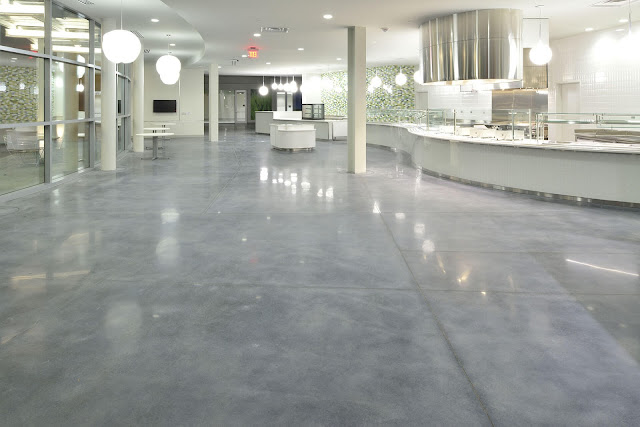The Ultimate Guide to Dustless Floor Sanding: Clean, Efficient, and Effective
Dustless floor sanding has revolutionised the way we approach floor renovation projects. Its benefits are numerous, including minimal airborne dust, improved indoor air quality, and a more efficient sanding process.
In this ultimate guide, we will delve into the world of dustless floor sanding in Melbourne, providing you with a comprehensive understanding of the technique, equipment and materials needed, preparation steps, execution techniques, post-sanding cleanup, and maintenance tips.
By the end of this guide, you'll be equipped with the knowledge to tackle your own dustless floor sanding project with confidence.
Dustless Floor Sanding
Dustless floor sanding, also known as dust-free sanding, is a modern approach to floor renovation that aims to minimise the release of airborne dust particles during the sanding process.
Unlike traditional floor sanding methods, which can create clouds of dust that infiltrate every nook and cranny of a space, dustless floor sanding utilises advanced equipment and containment systems to capture dust at its source, resulting in a cleaner and healthier working environment.
The primary difference between dustless floor sanding and traditional methods lies in the containment and extraction of dust. Instead of allowing dust to disperse freely into the air and settle on surrounding surfaces, dustless sanding systems feature powerful vacuums and filters that capture the dust as it is generated, preventing it from becoming a nuisance or health hazard.
The benefits of choosing dustless floor sanding in Melbourne for your project are numerous. Not only does it create a healthier and safer work environment by reducing airborne dust, but it also minimises the need for extensive post-sanding cleanup. Additionally, the controlled extraction of dust helps maintain the integrity of the surrounding space, preventing dust from settling on furniture, walls, and other surfaces.
Equipment and Materials Needed
Before embarking on a dustless floor sanding project, it's essential to gather the necessary equipment and materials. Additionally, you'll need to consider the type of flooring you'll be sanding and select the appropriate materials, such as sanding discs designed for hardwood or engineered wood floors.
When selecting equipment for dustless floor sanding, it's crucial to choose tools and supplies that are compatible with dustless sanding systems. This ensures optimal performance and dust containment throughout the sanding process. Investing in high-quality equipment and materials will contribute to the success and efficiency of your project, ultimately yielding a superior finish.
Preparing for Dustless Floor Sanding
Proper preparation is essential for a successful dustless floor sanding project. Begin by clearing the work area of furniture, rugs, and any other items that could obstruct the sanding process. It's also important to ensure adequate ventilation in the space and seal off doorways or openings to adjacent rooms to prevent dust from spreading.
In terms of containment, consider using plastic sheeting to create a barrier between the work area and the rest of the space. This containment system helps confine airborne dust and facilitates its extraction through the dustless sanding equipment. Additionally, taking safety measures, such as wearing a dust mask and protective gear, is crucial to safeguarding your health during the sanding process.
Executing Dustless Floor Sanding
Executing dustless floor sanding requires careful attention to detail and adherence to best practices. Begin by familiarising yourself with the operation of the dustless floor sander and the proper technique for maneuvering it across the floor surface.
As you progress through the sanding process, pay close attention to the dust containment system and ensure that it is effectively capturing the dust generated by the sender. Periodically check and empty the dust collection unit to prevent any loss of suction and maintain optimal dust extraction.
Common issues that may arise during the sanding process include uneven sanding, swirl marks, or clogging of the sanding pads. Troubleshooting these issues may involve adjusting the sanding technique, replacing the sanding pads, or addressing any mechanical issues with the equipment.
By remaining attentive to the sanding process and making necessary adjustments, you can achieve a smooth and uniform finish without compromising dust containment.
Post-Sanding Cleanup and Maintenance
Once the dustless floor sanding in Melbourne is complete, it's time to focus on post-sanding cleanup and floor maintenance. Begin by thoroughly cleaning the work area, including vacuuming any remaining dust and removing the containment barriers. It's crucial to pay attention to details, such as baseboards, corners, and transitions, to ensure that no dust particles are left behind.
Following the cleanup, consider applying a protective finish or sealant to the newly sanded floors to enhance their durability and longevity. This step not only adds a layer of protection to the wood but also contributes to the overall aesthetic appeal of the floors. Select a finish that is compatible with your flooring type and follow the manufacturer's application instructions for the best results.
In terms of ongoing maintenance, establish a regular cleaning routine to preserve the beauty of your newly sanded floors. Use a soft-bristled broom or a vacuum with a hardwood floor attachment to remove debris and prevent scratches. Additionally, consider using furniture pads to protect the floors from scratches and dents caused by moving furniture.
Conclusion
By embracing dustless floor sanding, you can enjoy the benefits of a cleaner, more efficient sanding process while achieving a beautifully refreshed floor surface.
With the knowledge and tips provided in this guide, you are well-equipped to embark on your own dustless floor sanding project with confidence. Here's to clean, efficient, and effective floor renovation!




Comments
Post a Comment